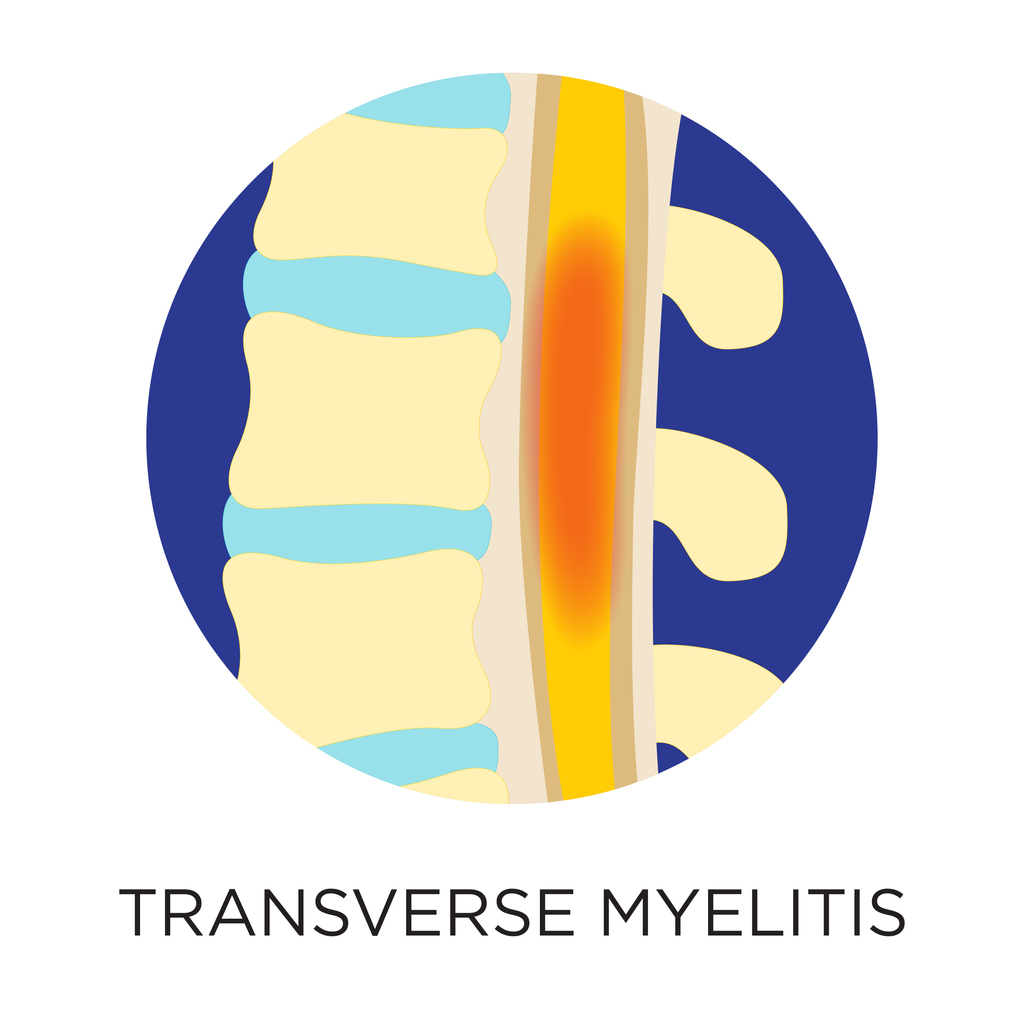Pain
Diagnosing Transverse Myelitis

What is transverse myelitis?
Transverse myelitis is a rare neurological condition that interrupts proper communication from the spinal cord nerves to other areas of the body. It is a result of inflammation that damages the myelin sheath, which is the covering that surrounds nerve cells of the spinal cord. Transverse myelitis can occur in any area along the spine and impacts both sides of the spinal cord.
Diagnosing transverse myelitis
A diagnosis of transverse myelitis (TM) begins with a thorough medical history and physical examination. Additional testing may include an MRI, spinal tap, and blood tests. Other conditions will also be ruled out as the cause of the symptoms.
Medical history
A health care professional will gather a health history that includes other conditions, current medications, and any recent virus or infection. Personal and family medical history will also be reviewed. Symptoms, including muscle and movement issues, abnormal sensations such as tingling or numbness, and bladder or bowel issues, should be detailed.
Physical examination
A clinical examination will focus on how well the nervous system is functioning by evaluating movement, reflexes, balance and thinking. Based on the results of the medical history and physical exam, a health care professional may request additional tests or imaging to help diagnose TM.
Magnetic resonance imaging (MRI)
An MRI of the spinal cord shows detailed images by using a powerful magnet and radio waves to look for inflammation and swelling. It can also help rule out other potential causes of symptoms, such as a spinal tumor, an abscess, or a herniated disc. An MRI of the brain may be ordered to identify a potential underlying cause of TM, such as multiple sclerosis.
Spinal tap
During a spinal tap, a needle is inserted through the lower back into the spine in order to remove a small sample of cerebrospinal fluid (CSF). CSF is the protective fluid that surrounds the spinal cord and the brain. The CSF is then analyzed for markers of inflammation, such as elevated white blood cells. Additionally, this fluid can be analyzed for certain types of cancer or viral infections.
Blood tests
While there is not a specific blood test that can identify TM, blood tests may be ordered to check for infection-related or immune-related causes of TM. For example, a blood test can be reviewed for antibodies related to neuromyelitis optica, which causes inflammation in the spinal cord and in the eye. Blood tests can also be used to rule out other potential causes of symptoms, such as rheumatologic diseases.
Additional source: Oregon Health & Science University












